calsfoundation@cals.org
Camp Joyzelle
Camp Joyzelle was a summer camp for girls that operated for nearly three decades at Monte Ne (Benton County). Summer camps emerged in the late 1800s as a way to provide urban youngsters with wholesome, outdoor activities during the long summer vacation. Summer camping for girls became popular after World War I. Some camps were run by organizations such as the Girl Scouts, while others were similar to private schools and served mostly well-to-do families. Camp Joyzelle was a typical example of the latter.
The camp was founded by Iris Armstrong, who at the time had a private dramatic academy in Little Rock (Pulaski County). Armstrong’s goal was to start a camp at which girls could be instructed in drama and the arts and also enjoy outdoor activities. In February 1923, she leased about 100 acres of land near the Monte Ne train depot. Since rail service to Monte Ne had ended, the depot became the camp’s main office. Armstrong named the camp “Joyzelle” for the heroine of poet and playwright Maurice Maeterlinck’s 1903 play of that name. The first group of campers arrived in June 1923. Some stayed only a week, while others were there for the entire summer. The girls ranged in age from eight to seventeen. The campers lived in tents the first summer. The next year, screened cabins were built, each one named after mythical goddesses such as Daphne, Pandora, or Diana.
The main lodge included a library, recreation hall, handicrafts shop, art studio, and theater. Other camp buildings included a studio for dancing and dramatics, a dining hall, an infirmary, and shower rooms. Camp Joyzelle catered primarily to well-to-do girls from Little Rock, Dallas, and other Southern cities. However, at camp, the girls endured cold-water showers and employed outhouses.
Campers could swim, canoe, hike, ride horseback, and play tennis, but drama and dance were also major camp activities. Helen Armstrong, the founder’s sister, taught dance, and the campers performed in gauzy, flowing “Grecian” robes. William H. “Coin” Harvey, the founder of Monte Ne, had a good relationship with the camp until his death in 1936. Camp programs were often given at Harvey’s amphitheater, sometimes with him in attendance.
Each week ended with a Sunday evening fire-lighting ritual. At the end of the event, each girl who was to head home before the next campfire threw a twig into the fire in honor of the friends she had made at camp. The singing of the camp hymn was followed by “Taps,” which closed the service.
The Armstrongs retired in 1956, but Joyzelle continued on under the ownership of Mary Powell. By the 1950s, there were two summer sessions attended by over 200 campers from thirty-three states. Camp activities had expanded to include archery, badminton, ping pong, basketball, volleyball, and a weekly movie.
Camp Joyzelle survived the hard times of the Depression and the disruptions of World War II, but it did not survive the building of Beaver Dam. In 1960, the Army Corps of Engineers acquired the part of Joyzelle expected to be covered by Beaver Lake. Feeling it was no longer practical to continue operating, Powell sold the remaining seventy-five acres to the corps in 1962. Today, much of what was Camp Joyzelle lies beneath the waters of Beaver Lake.
For additional information:
Camp Joyzelle Research Collection. Research Library, Rogers Historical Museum, Rogers, Arkansas.
Cummings, Linda Leiper. Letters to the Rogers Historical Museum, November 13, 1994, and February 24, 2000. Research Library, Rogers Historical Museum, Rogers, Arkansas.
Davis, Richard J. “Camp Joyzelle Featured on AETN.” Morning News of Northwest Arkansas. March 8, 1996, p. 8.
Eells, Eleanor. History of Organized Camping: The First Hundred Years. Martinsville, IN: American Camping Association, 1986.
Grant, Margaret. “Camp Joyzelle at Monte Ne One of Middle West’s Most Popular Camps for Girls.” Rogers Daily News. August 28, 1956, p. 22A.
A History of Camp Joyzelle. N.p.: 2011.
Lord, Allyn. Historic Monte Ne. Charleston, SC: Arcadia Publishing, 2006.
Mitchell, Dorothy. “Days at Camp Joyzelle.” Ozarks Mountaineer, May 1970, 18–19.
Van Slyck, Abigail A. A Manufactured Wilderness: Summer Camps in the Shaping of American Youth, 1890–1960. Minneapolis: University of Minnesota Press, 2006.
Gaye K. Bland
Rogers Historical Museum
 Geography and Geology
Geography and Geology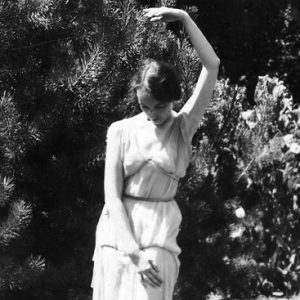 Helen Armstrong
Helen Armstrong 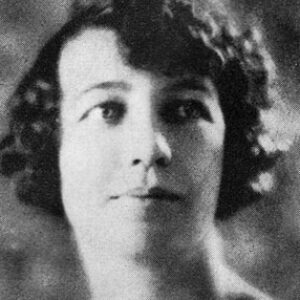 Iris Armstrong
Iris Armstrong 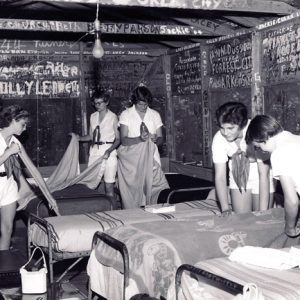 Camp Joyzelle Cabin Interior
Camp Joyzelle Cabin Interior 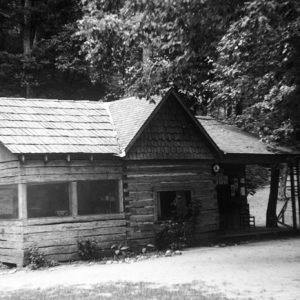 Camp Joyzelle Office
Camp Joyzelle Office 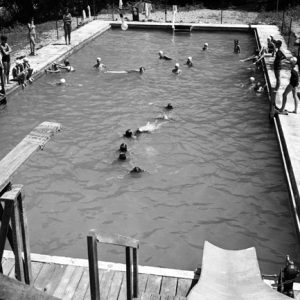 Camp Joyzelle Pool
Camp Joyzelle Pool 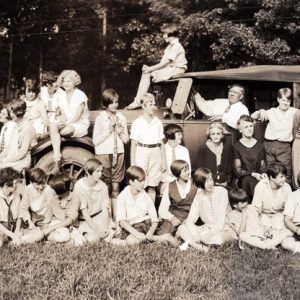 Camp Joyzelle
Camp Joyzelle 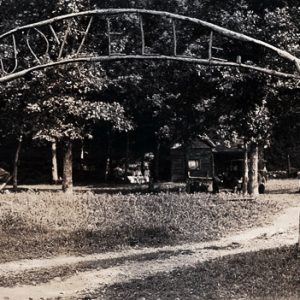 Camp Joyzelle Sign
Camp Joyzelle Sign 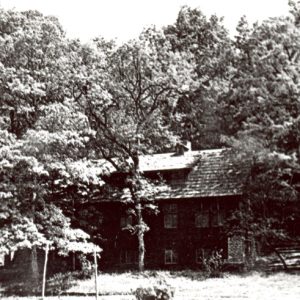 Camp Joyzelle Lodge
Camp Joyzelle Lodge  Camp Joyzelle Map
Camp Joyzelle Map 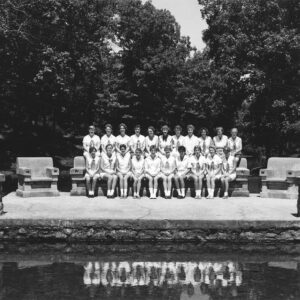 Camp Joyzelle Counselors and Campers
Camp Joyzelle Counselors and Campers 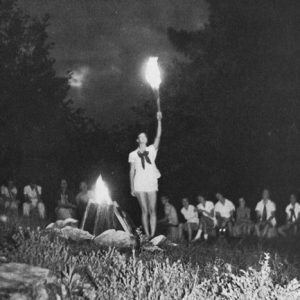 Friendship Campfire Circle; 1950s
Friendship Campfire Circle; 1950s 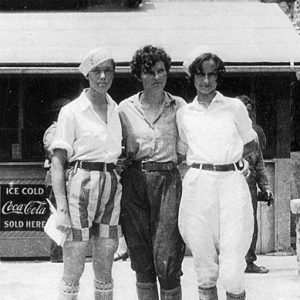 Joyzelle Campers; 1920s
Joyzelle Campers; 1920s 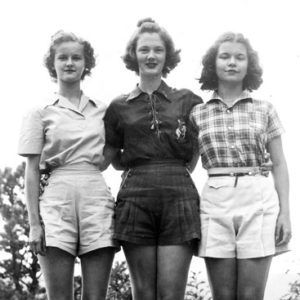 Joyzelle Campers; 1930s
Joyzelle Campers; 1930s  Joyzelle Canoeists
Joyzelle Canoeists 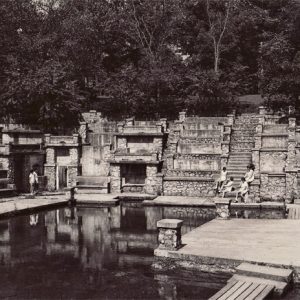 Monte Ne Amphitheater
Monte Ne Amphitheater 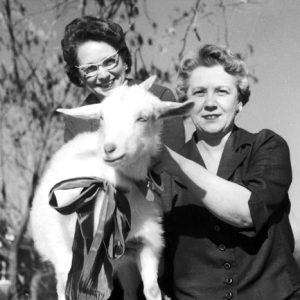 Mary Powell and Mickey Davis
Mary Powell and Mickey Davis 




Camp Joyzelle was also featured in Arkansas Remembered II, a DVD production of AETN in about 1996. It was one of about six stories featured. It included comments from women who attended the camp. I was included in a segment about Grapette.
My sister attended Camp Joyzelle in the late 1940s. The first year she loved it; the second year–just so-so. I read in the article that girls from wealthy families in Little Rock came to Camp Joyzelle. Golly gee whiz–we lived in the bootheel of Missouri where my dad owned a shoe store. I reckon we could be considered “society” in that small town. I think I probably had more good times at Arcadia, Missouri, at our church camp. Was kissed for the first time at Arcadia. Now I am seventy-eight years old. Anyone out there wanna kiss an old woman?
My mom, Mary Idella Scarlett, was a nurse at this camp during the late 1930s or early 1940s. She was a young nursing student at St. Vincent’s.
I ran across an envelope of pictures from Camp Joyzelle that my grandmother had. My grandmother worked as a volunteer there a few summers so that my mother could attend. The envelope says “scenes from Joyzelle Camp 1922.”
My Grandmother passed away in 2011 at the age of 107. She talked about Joyzelle and said how wonderful it was. My mother is eighty-two and also says that she enjoyed it very much. She loved the horseback riding especially.